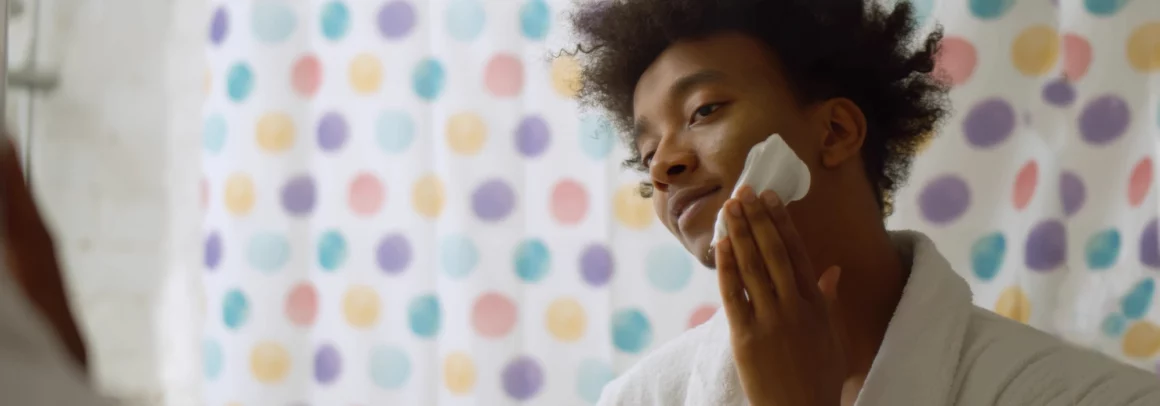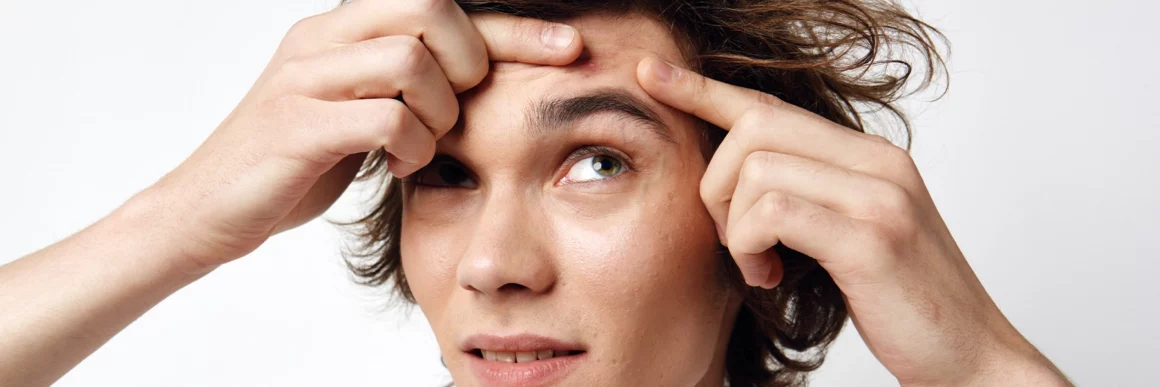It’s never too early for your young person to get to know their skin and start taking care of it. Although it’s really rare, abnormal moles and skin cancer can occur in preteens and teens, so encourage older teens to begin taking a look at their skin once a month to check for changes.
For younger teens, you may want to do this check yourself. There are certain changes on the skin that mean it’s time to see a dermatologist. Your young person may need to see a dermatologist if you have noticed any of these red flags.
Look for Abnormal Changes in Moles
When you take a look at your young person’s skin once a month, it’s a great idea to check out the various dark spots on their body, called moles or nevi. Moles may be present when we are born or show up later in life. You can continue to get new ones up until about age 40. These skin marks are made up of cells called melanocytes, that produce pigment in the skin.
PRO TIP > Encourage your teen to explore the BLOOM TEEN HUB to learn all about their skin and skin care, written just for them!

It’s a good idea to look out for changes in these lesions on your young person and take note if any start to grow noticeably larger, change in color, become asymmetrical (where both sides don’t match each other), or develop jagged borders. Skin lesions that itch or bleed also may need to be looked at by a professional.
Moles can be unique marks for an individual and aren’t anything to be embarrassed about. We ALL have special and unique marks on our skin. But if you notice a mole on your young person is growing or making them feel insecure, then it could be time to see a dermatologist.
If your young person wants to prevent the development of new moles make sure to tell them to wear sunblock or use sun-protective clothing every day. Protecting ourselves from the sun is the only way to stop or slow the development of new moles, sun spots, or freckles.
Check for Family History of Melanoma

Has anyone in the family been diagnosed with melanoma? If anyone in your immediate biological family has been diagnosed with melanoma, a dangerous form of skin cancer, we recommend that your young person have a skin check during their yearly physical to catch anything early.
Watch for Acne Scarring
It is normal to get some acne as your young person goes through puberty, but if there are more than ten inflammatory lesions at a time or deep painful nodules, you may need to have them see a dermatologist for treatment.
These deep nodules have the potential to scar, so if you start seeing marks left on the skin from their acne, talk to your young person about how they are taking care of their skin. There are some natural remedies for acne scarring but be sure to speak to your doctor or dermatologist for options that might be right for your young person.

Ready to elevate your parenting? Become a member of the BLOOM family today!
Gain access to workshops, coaching, and a network of supportive parents. Don’t navigate this journey alone –
Note Any Unexplained Rashes
Lots of kids have rashes, like eczema or psoriasis, and these problems often require a visit to the dermatologist to get it under control. If your young person has an itchy rash or other skin problem that is impacting their activities or self-esteem, or that just won’t seem to go away with good, daily hygiene and skincare, then it may be time to get some extra help from a professional.
Be Aware of Hair Loss

If your young person has patches of hair loss on their skin, they may have a condition called alopecia areata. The good news, this is usually reversible with treatment. You will need to have them see a dermatologist, get creams, or special in-office injections to remedy the patches.
Other reasons for hair loss include a hormonal imbalance, poor nutrition, hair treatments, styling techniques that are damaging to the hair, medical illness or condition, etc. Your young person may choose to wear hair pieces including toppers, extensions, wigs, headbands, or hats. Or your young person may embrace their thinning hair.
Check for Genital Sores or Ulcers
Not all skin problems on the vulva (the external female genital area), the penis, or the scrotum are sexually transmitted, but a painful sore in the genital area can sometimes be the result of a herpes infection. Tan and brown warts can also occur due to exposure to a sexually transmitted infection, a virus called HPV.
Other skin conditions can occur below the belt that are not sexually transmitted, including contact dermatitis (a type of allergic reaction), psoriasis (a common skin condition that often causes red rashes on the knees, elbows, scalp, folds between the buttocks, and groin), and fungal infections. Any of these issues probably call for a trip to the doctor to check the area and get treatment options.
Keeping an eye on your teen’s skin health is important for detecting any abnormal changes early. Make skin checks part of your regular health routines and empower your teen to pay attention to their body. Watch for any new or changing moles, rashes, sores, and more, and don’t ignore red flags! Bring any concerns up to your doctor or dermatologist. Catching problems early can make treatment easier and help prevent lasting effects, like scarring. With your (and your teen’s) vigilance, care and open communication, your teen can maintain healthy, confident skin.
Parenting can leave you feeling overwhelmed and alone, but at BLOOM you have a community ready to help. Access Live and On-Demand Workshops featuring our trusted experts. Get answers to your pressing questions through our Ask the Expert Platform. Find strength by joining our Community Group and connecting with fellow parents and caregivers. If you need more tailored support, take advantage of our 1-on-1 Parent Coaching Sessions. Raising tweens and teens is hard, but with BLOOM by your side, you don’t have to do it alone.
